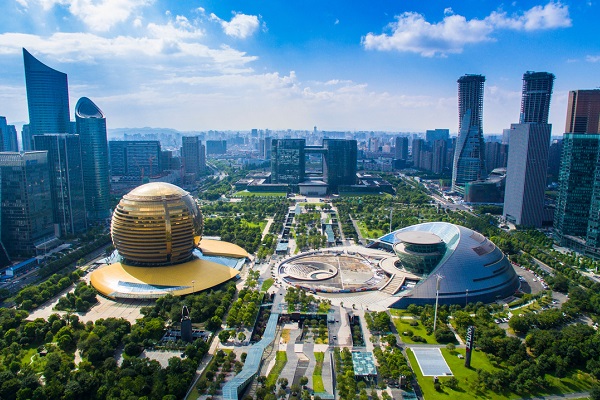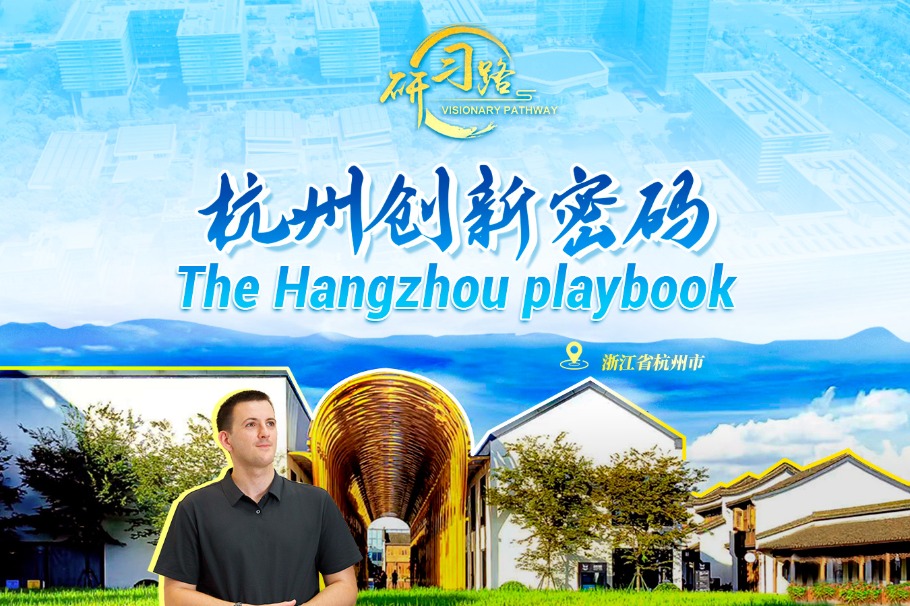A celebration for a time of promise
Cherished memories
With time's inexorable march, each moment with family becomes a cherished gem, stored in the memory chest.
The memories of Spring Festival are distinct to each generation, with every generation holding its own unique experiences, often quite different from those of the ones that came before or will come after.
In times of material scarcity, Spring Festival was a rare opportunity for a true feast, a prospect that children eagerly awaited for weeks, even months.
The meal was typically prepared by the family, and the hustle and bustle of the kitchen — the clatter of pots and pans, the aroma of food — enhanced the festive atmosphere.
For children, the very thought of a lavish banquet — a table laden with dishes — was enough to send their mouths watering and their imaginations racing, all amid the joyful chaos of a large family gathering.
Spring Festival was more than just a meal; it was the climactic culmination of a year's hopes and desires, brought to life in one unforgettable dinner, which would begin around noon and stretch on until midnight.
The scarcity began to ease in the 1980s, following China's reform and opening-up initiated at the end of 1978. These sweeping reforms, which significantly boosted economic development, also gave rise to a vast population of migrant workers. By the mid-1990s, their numbers had surged to hundreds of millions.
The labor migration from rural areas to industrial cities not only drove China's economic boom but also profoundly altered rural life and social structures, reshaping traditions such as Spring Festival in lasting ways.
For migrant workers and the families they have left behind — parents, spouses and children — Spring Festival is no longer a pause in agricultural labor but a much-cherished time for reunions, a brief chance to close the distance imposed by economic necessity.
Parents return home with stories of the bustling cities, offering glimpses into a world far removed from the tranquil rhythms of village life. The children, who ache for their parents' presence, savor the moment as they also brace for another farewell.
Before the advent of high-speed railways, the massive flow of people in the days leading up to Spring Festival turned train rides into a grueling ordeal.
The carriages were packed to the brim, with the narrow walkway running through the middle of the train entirely occupied by passengers holding "standing tickets", which condemned them to long hours — sometimes 10 or more — on their feet. The crowd was so dense that trying to cut through it felt like a hopeless endeavor. The air was thick with the smell of sweat, and, every so often, a weary groan would rise above the murmur of voices, as exhaustion took its toll on the travelers.
As if the journey itself weren't challenging enough, nearly everyone carried giant packages — gifts for loved ones, in an era when what was available in one part of the country might be impossible to find in another.
Among the passengers were students returning home for Spring Festival and winter holiday, their parents waiting on the arrival platform, sometimes in temperatures as low as -30 C.
These experiences gradually fade into memories. Today, children no longer eagerly anticipate the festival for a taste of candy, and Spring Festival may even be spent on a sun-kissed beach, far from home.
Yet, the relentless tide of urbanization and the fast pace of modern life means that separation has become more frequent and inevitable, making each reunion all the more precious.
Those who have been through life's trials appreciate the deeper significance of such an occasion like Spring Festival.
Life is not always kind or easy. Spring Festival can neither erase struggles nor lift burdens but it offers solace — a gentle balm for the weary soul, a moment of comfort and warmth to brighten life's winter nights.
Illuminating ritual
It has long been a tradition for people — except young children — to stay awake throughout the night beginning from Chinese New Year's Eve. This custom, known as shou sui or the New Year's vigil, reflects a deep desire to safeguard what's most valued. The glow of lights is also expected to illuminate the path home for loved ones.
"The candlelit lamp's faint flame, obscured by the curtain, fades and dies; the incense on the brazier burns to ash and sighs." This is how an 8th-century Chinese poet beautifully depicts the stillness near the end of shou sui, as the long vigil approaches its close and night yields to dawn.
About 340 years later, Su Shi (1037-1101), a much-revered polymath of the Northern Song Dynasty and a contemporary of Wang Anshi, composed another poem for the occasion, under the title Shou Sui.
"To sense the year's end approaching; is like seeing a snake slipping into a ravine. Half its scaled body has already vanished away; who can stop its journey, or make it stay?" prompted Su, whose influence on Chinese culture as a poet, prose writer and painter is hard to overestimate.
It's interesting to note that according to the Chinese zodiac, the upcoming New Year, beginning on Jan 29, marks the Year of the Snake, often referred to in Chinese culture as the "dragon minor". This connection stems from the snake's physical resemblance to the dragon, as well as its revered qualities — grace, mystery and power — which mirror those of the dragon, a symbol of might and virtue in Chinese culture.
Later in his poem, Su Shi, having sat for the whole night, "rose to peer at the slanting Northern Spoon".
The "Northern Spoon" here refers to the shape of the Big Dipper — a prominent group of seven stars that form part of the constellation Ursa Major (the Great Bear).
As one of the most recognizable star patterns in the night sky, especially in the Northern Hemisphere, the Big Dipper often marked the passage of time. Their tilting toward the horizon signifies that the night is drawing to a close and dawn is near.
Stargazing — that's what people in ancient China almost certainly did while waiting for the first rays of the new year.
In fact, at the core of the traditional Chinese calendar were the persistent advances in the art of astronomy and mathematics, integrated with the cultural, agricultural and political life of a society that believed the rule of heaven was the rule of law, with ultimate legitimacy resting in the reign of the natural order.
In their quest for greater accuracy and better alignment of the lunar and solar cycles, the Chinese, whose earliest evidence of timekeeping appears on oracle bones, also drew from other cultures.
The Gregorian calendar, or solar calendar, was officially adopted in China on Jan 1, 1912.
Yet, the traditional Chinese calendar, the sole system known to nearly all Chinese up to that point, endures for cultural and celebratory purposes, offering a reminder of the nation's rich legacy. To distinguish the traditional new year from the Gregorian solar new year, the term "Spring Festival" became customary.
Spring Festival usually concludes on the 15th day of Chinese New Year, corresponding to Feb 12 in the solar calendar. This final day, marking the first full moon of the new year, is traditionally illuminated by delicately handcrafted lanterns — some bearing riddles — that adorn every corner.
Su Shi, whose poetic instinct was forever in tune with the moon, once wrote:
"Life brings both joy and sorrow, union and separation.
Like the moon's phases, in constant fluctuation.
Imperfect it's been since the dawn of creation."
For many of us, the past year has been far from perfect, and the year ahead may hold its trials. Yet, it is the courage to face adversity and the strength to carry on with grace that transforms all the imperfect moments into perfect memories.
As for New Year's Eve and every night and day, do what Su Shi recommends in his Shou Sui poem — "Make the most of your time."
-
Visionary Pathway - Hangzhou Playbook
July 15, 2025



